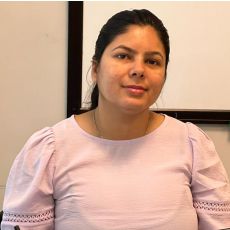
Science (SNC1D)
Course Description
This course enables students to develop their understanding of basic concepts in biology, chemistry, earth and space science, and physics, and to relate science to technology, society, and the environment. Throughout the course, students will develop their skills in the processes of scientific investigation. Students will acquire an understanding of scientific theories and conduct investigations related to sustainable ecosystems; atomic and molecular structures and the properties of elements and compounds; the study of the universe and its properties and components; and the principles of electricity.
For Ministry Guideline Click Here
| Units | Descriptions | Length (Approximately) |
|---|---|---|
| 1. | Biology: Sustainable Ecosystems Students will demonstrate an understanding of the dynamic nature of ecosystems and their ability to respond, within limits, while maintaining their ecological balance. They will also assess society’s responsibility to regulate their impact on the sustainability of ecosystems in order to preserve them for future generations. |
25 hours |
| 2. | Chemistry: Atoms, Elements, and Compounds Students will investigate the specific physical and chemical properties of elements and compounds that can be used to determine their practical uses. They will also demonstrate an understanding that elements and compounds have both positive and negative effects on society and the environment. |
25 hours |
| 3. | Earth and Space: The Study of the Universe Students will demonstrate an understanding that different types of celestial objects in the solar system and universe have distinct properties that can be investigated and quantified. They will investigate how people use observational evidence of the properties of the solar system and the universe to develop theories to explain their formation and evolution. Students will also evaluate the enormous cost of space exploration that has generated valuable knowledge of the solar system and universe. |
25 hours |
| 4. | Physics: The Characteristics of Electricity Students will demonstrate an understanding that electricity is a form of energy produced from a variety of non-renewable and renewable sources. They will investigate the distinct properties of static and current electricity that determine how they are used. Students will also evaluate the social, economic, and environmental implications of the production and consumption of electrical energy. |
25 hours |
| Final Culminating Task 6 Hrs Mock Exam (2 hrs) Final Exam 2.0 Hrs | 10 hours | |
| Total | 110 hours | |
Overall Curriculum Expectations
By the end of this course, students will:
- Demonstrate scientific investigation skills (related to both inquiry and research) in the four areas of skills (initiating and planning, performing, and recording, analyzing and interpreting, and communicating).
- Identify and describe a variety of careers related to the fields of science under study, and identify scientists, including Canadians, who have made contributions to those fields.
By the end of this course, students will:
- Assess the impact of human activities on the sustainability of terrestrial and/or aquatic ecosystems and evaluate the effectiveness of courses of action intended to remedy or mitigate negative impacts.
- Investigate factors related to human activity that affect terrestrial and aquatic ecosystems and explain how they affect the sustainability of these ecosystems.
- Demonstrate an understanding of the dynamic nature of ecosystems, particularly in terms of ecological balance and the impact of human activity on the sustainability of terrestrial and aquatic ecosystems.
By the end of this course, students will:
- Assess social, environmental, and economic impacts of the use of common elements and compounds, with reference to their physical and chemical properties.
- Investigate, through inquiry, the physical and chemical properties of common elements and compounds.
- Demonstrate an understanding of the properties of common elements and compounds, and of the organization of elements in the periodic table.
By the end of this course, students will:
- Assess some of the costs, hazards, and benefits of space exploration and the contributions of Canadians to space research and technology.
- Investigate the characteristics and properties of a variety of celestial objects visible from Earth in the night sky.
- Demonstrate an understanding of the major scientific theories about the structure, formation, and evolution of the universe and its components and of the evidence that supports these theories.
By the end of this course, students will:
- Assess some of the costs and benefits associated with the production of electrical energy from renewable and non-renewable sources and analyse how electrical efficiencies and savings can be achieved, through both the design of technological devices and practices in the home.
- Investigate, through inquiry, various aspects of electricity, including the properties of static and current electricity, and the quantitative relationships between potential difference, current, and resistance in electrical circuits.
- Demonstrate an understanding of the principles of static and current electricity.
Assessment & Evaluation of student performance
Formative assessments are learning practices that provide important feedback to student progress. Examples include homework and quizzes.
Summative assessments form a foundation for final mark allotment at the end of the unit, term and final evaluation.
An achievement chart will be given to students at regular intervals and the purpose of the charts is to provide feedback to students in relation to content and performance strands.
| Knowledge and understanding | Communication | Thinking Inquiry and Problem solving | Application |
|---|---|---|---|
| 25% | 25% | 25% | 25% |
Unit Tests, Written assignments, presentations, Classroom Observations and Classroom conversations.










